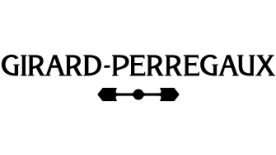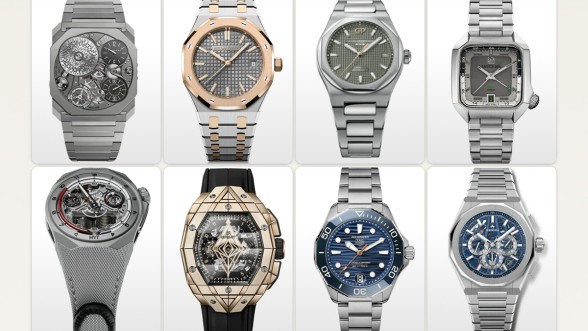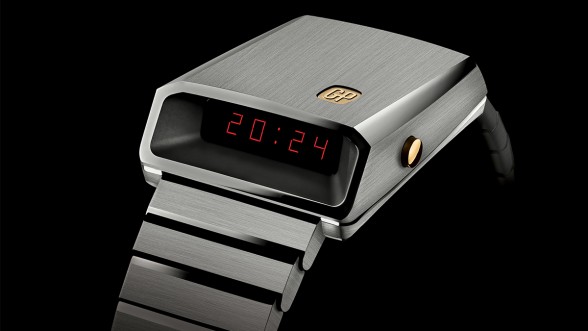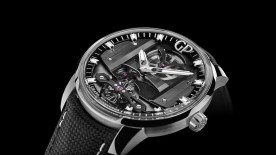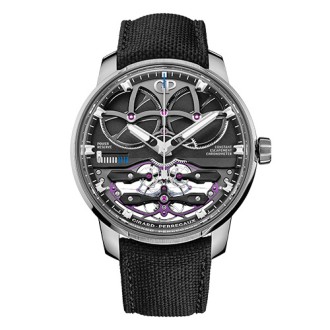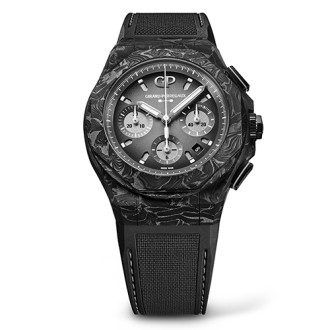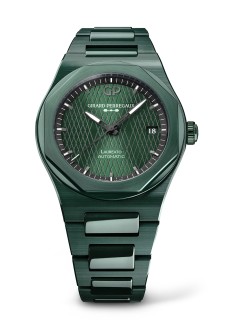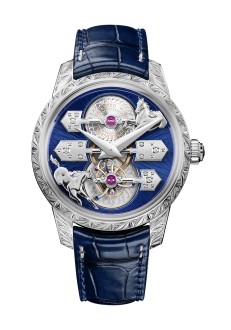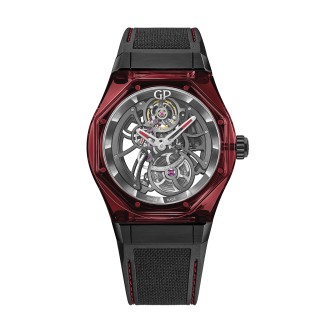Girard-Perregaux
The Manufacture began its activities in 1791, meaning that Girard-Perregaux as it now stands is grounded on an over two-century heritage.
Jean-François Bautte, born March 22nd 1772, initially trained as a case assembler before successively becoming a guillocheur, a watchmaker and a goldsmith. He signed his first watches in 1791, at the age of 19. This talented watchmaker became known for his ultra-thin models. In his native town of Geneva, he took the innovative step of founding a manufacturing company housing the full range of watchmaking skills. Jean-François Bautte welcomed a number of prestigious visitors, notably including Victoria, the future queen of England. An astute industrialist and savvy businessman, he established trading relations with European courts that enabled him to steadily build his reputation.
In 1837, Jacques Bautte and Jean-Samuel Rossel took over from Jean-François Bautte who bequeathed them a strong industrial legacy. Several years later, Jean-Samuel continued the adventure on his own, shortly afterwards backed by his son, Jacques Rossel. Their work in the field of chronometry was regularly rewarded at international exhibitions.
Constant Girard founded Girard & Cie in 1852. Two years later, he married Marie Perregaux (1831-1912). In 1856, the joining of their two names gave rise to the Manufacture Girard-Perregaux established in La Chaux-de-Fonds. Marie Perregaux’s three brothers – Henri (1828-1893), François (1834-1877) and Jules (1838-1903) – also played a role in the company, with Henri and Jules representing it in North and South America, and François in Asia.
In 1889, Constant Girard presented a Tourbillon that won a prize at the Paris Universal Exhibition: the famous “La Esmeralda” model subsequently gifted to Mexican president Porfirio Díaz. That was also the year when Gustave Eiffel presented his iconic tower.
Constant Girard-Gallet, son of Constant Girard and Marie Perregaux, took over the Bautte company in 1906 and merged it with Girard-Perregaux & Cie.
By the late 1950s, Girard-Perregaux had its own Research & Development department operating within the Manufacture. This in-house team enabled the brand to develop high-precision movements. In 1966, Girard-Perregaux enriched its Gyromatic line with the first high-frequency movement (36,000 vibrations per hour). In 1967, no less than 70% of the chronometer certificates issued by the Neuchâtel Observatory were awarded to Girard-Perregaux high-frequency chronometers. During this period, the Manufacture took an interest in quartz movements and initiated Switzerland’s first ever industrial-scale production of quartz watches in 1971. The frequency of 32,678 Hz set by Girard-Perregaux remains the universal standard for quartz watches.
To celebrate its bicentenary in 1991, the Manufacture presented a miniaturized wristwatch version of the Tourbillon with Three Gold Bridges, a pocket watch that had earned a distinction at the time of its creation.
In 1992, the Italian entrepreneur, architect and former racing driver Luigi Macaluso took the helm of Girard-Perregaux. Under his leadership, the Manufacture developed a full-fledged Manufacture-style approach and in 1994 introduced a new line of ultra-thin calibers respectively named GP3000 and GP3100.
In 2008, Girard-Perregaux presented a Bi-Axial Tourbillon equipped with two concentric carriages enabling the regulating organ to perform multi-dimensional rotations. This construction compensates for the variations in rate due to gravity.
In 2011, the Kering group, one of the leading sports and lifestyle companies, acquired a majority shareholding in Girard-Perregaux. The Manufacture was celebrating its 220th anniversary and on this occasion, the Haute Horlogerie collection was enriched with a model inspired by its history: the Girard-Perregaux 1966 Tourbillon with Gold Bridge issued in an individually numbered 50-piece limited edition.
Girard-Perregaux unveiled in 2013 a noteworthy innovation in the field of Haute Horlogerie: a constant-force escapement, the Constant Escapement L.M. of which the initial prototypes had been first presented in 2008.
